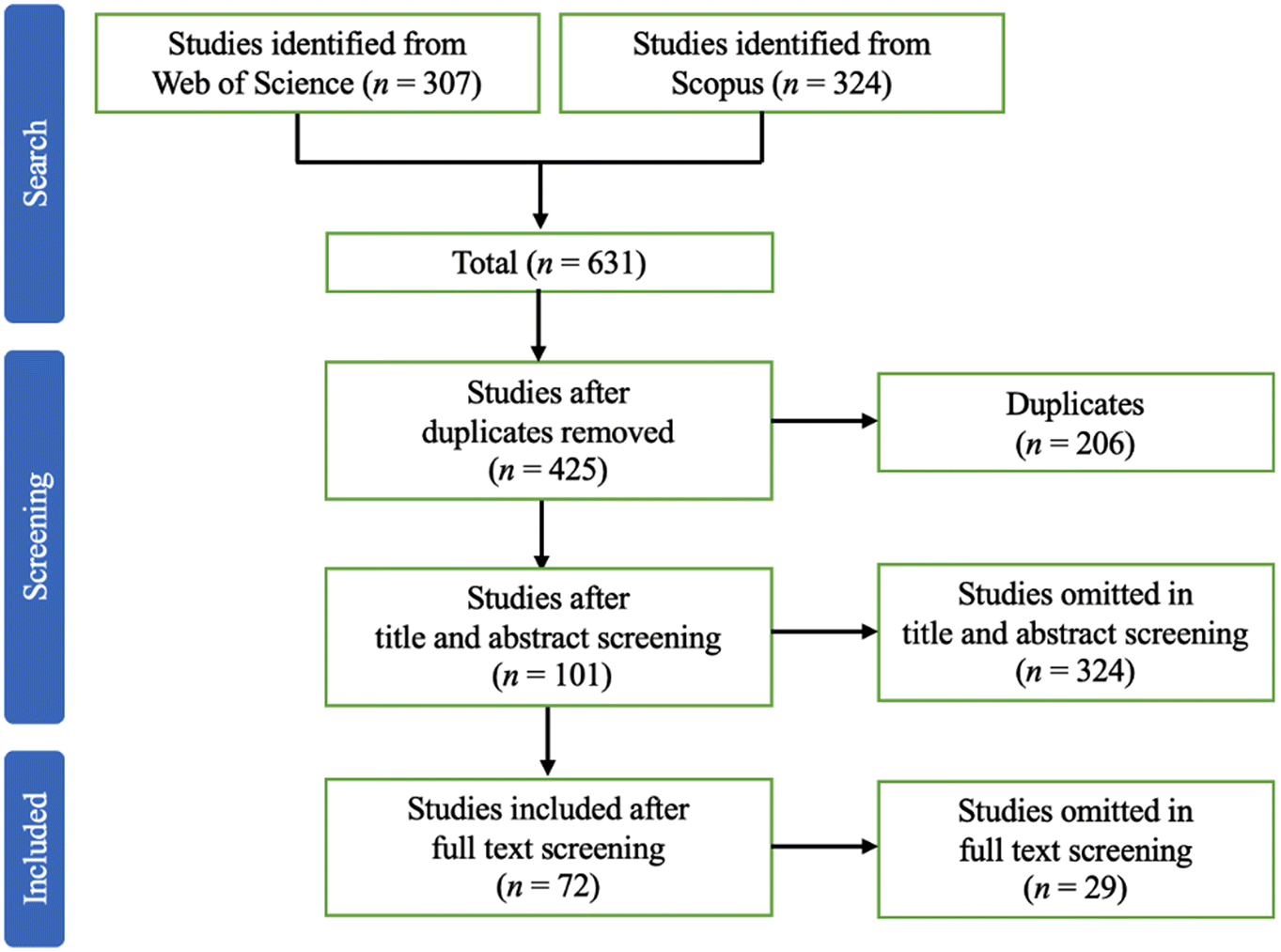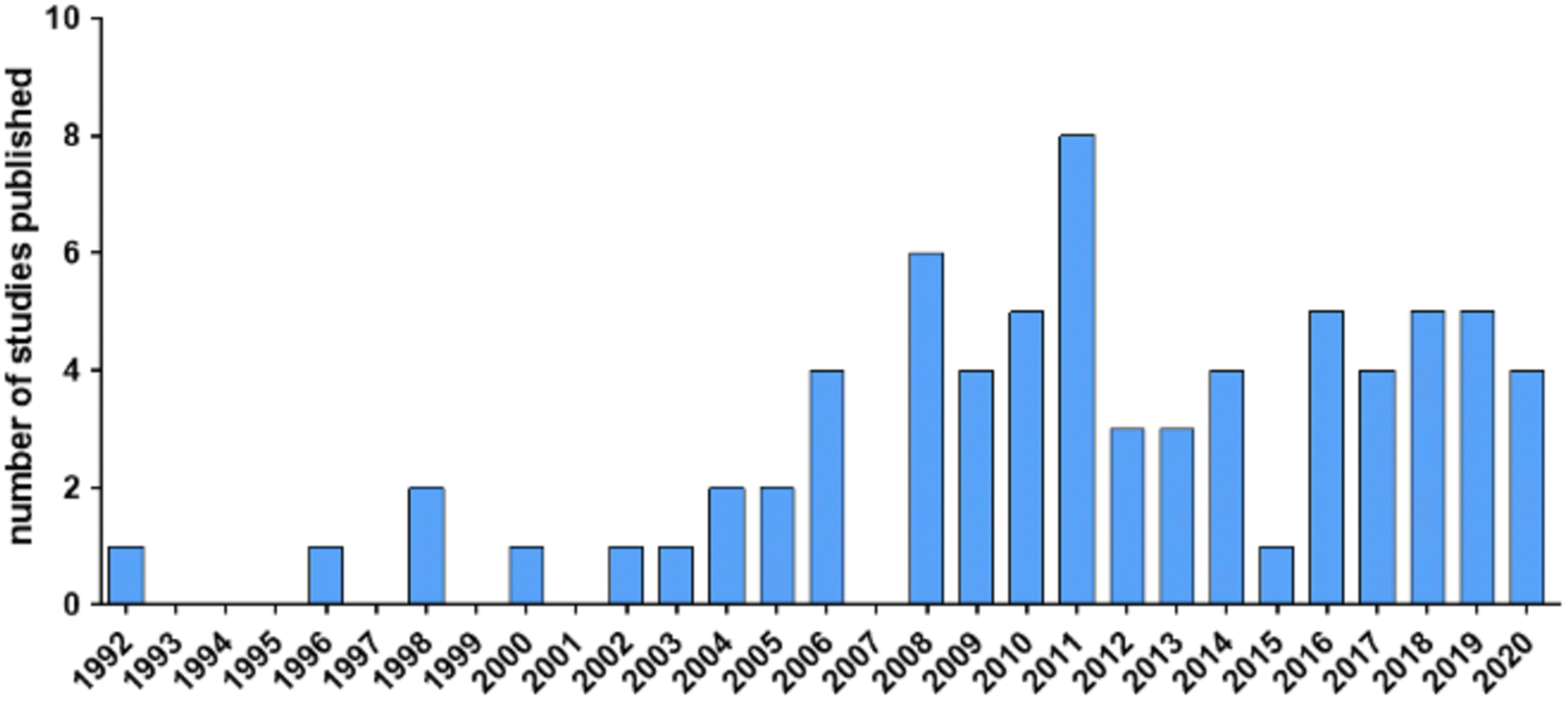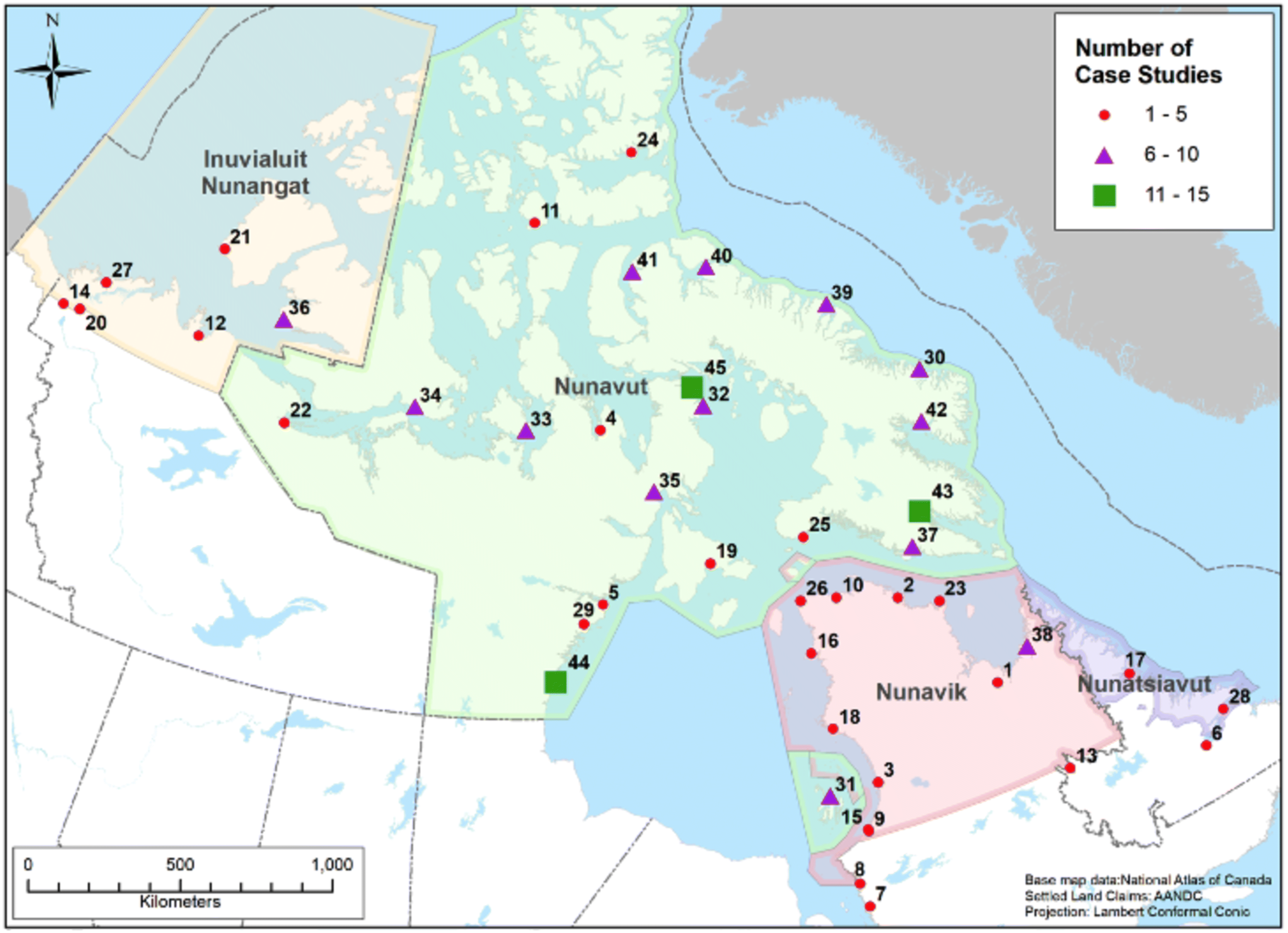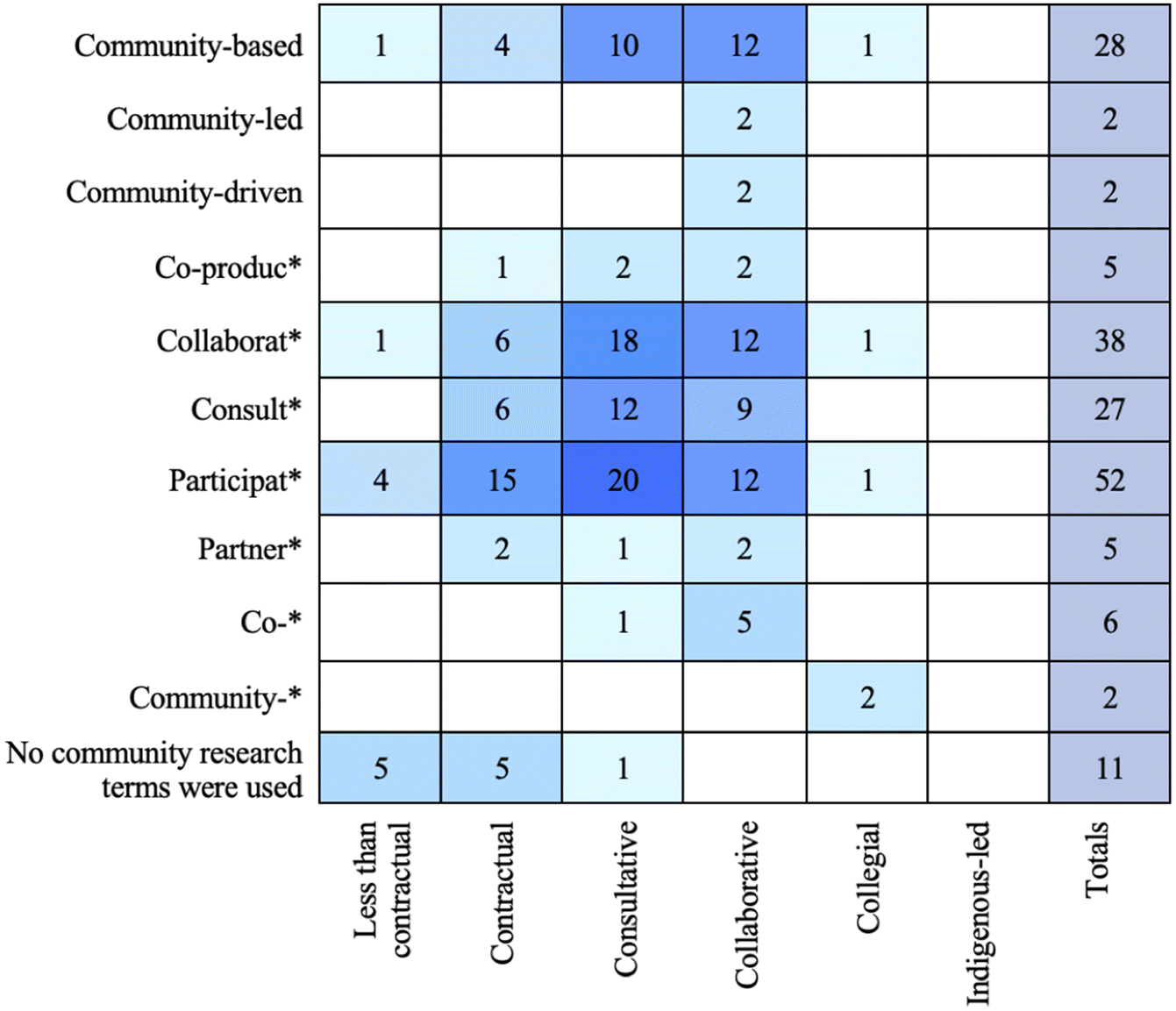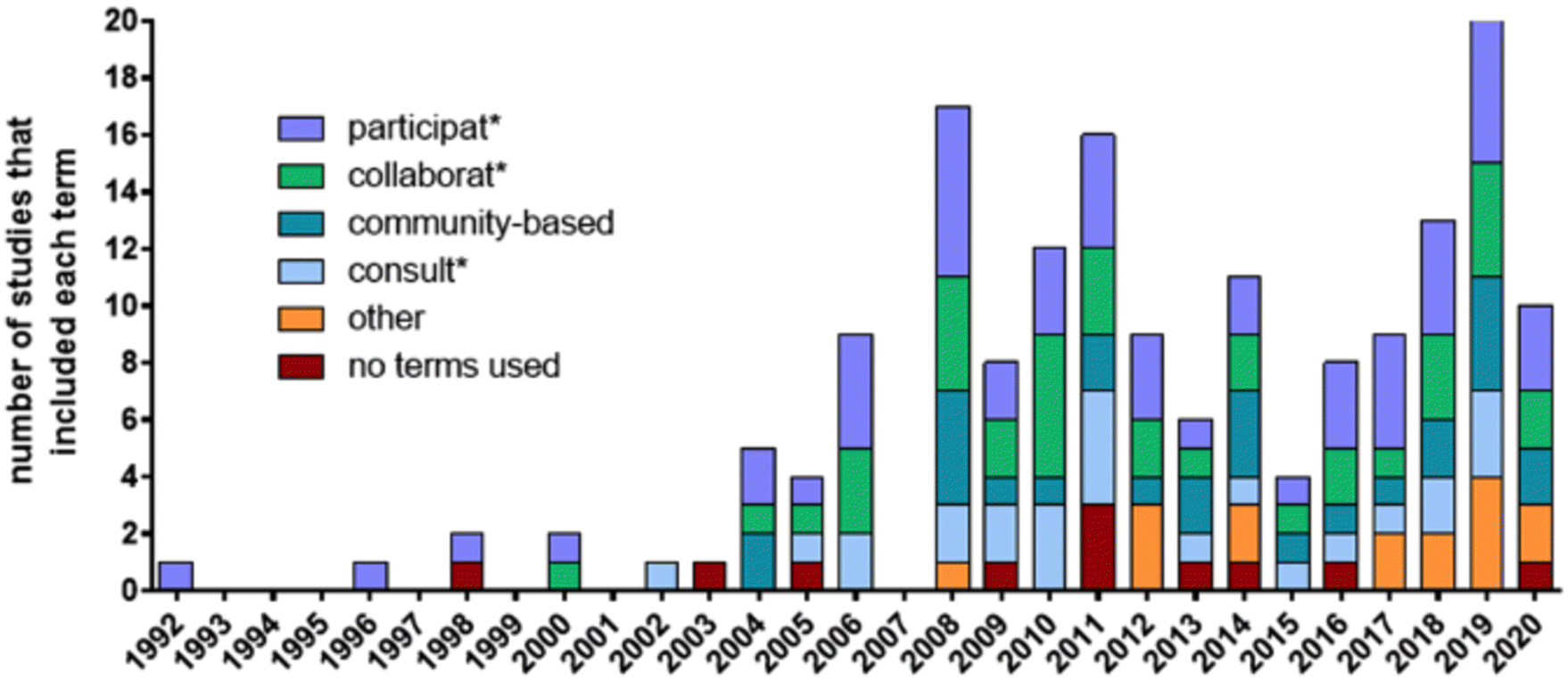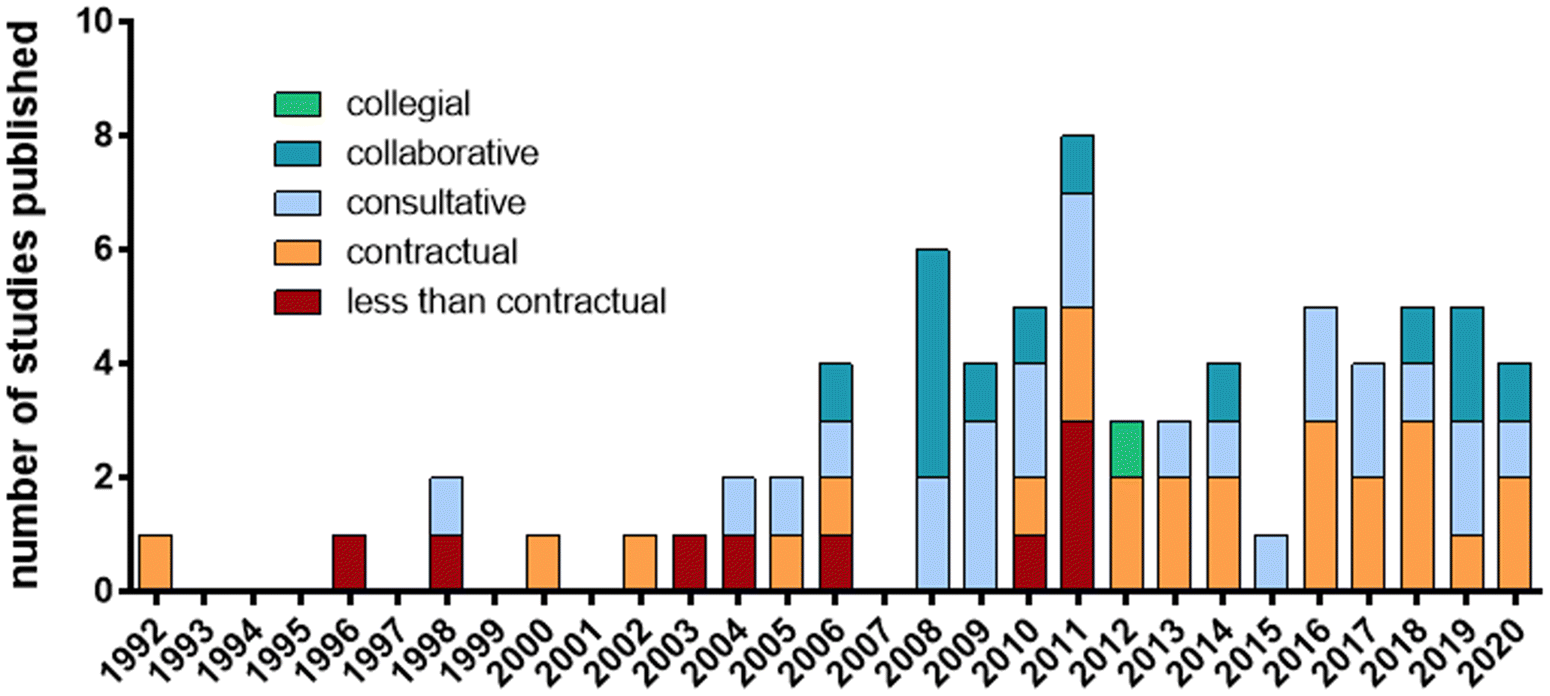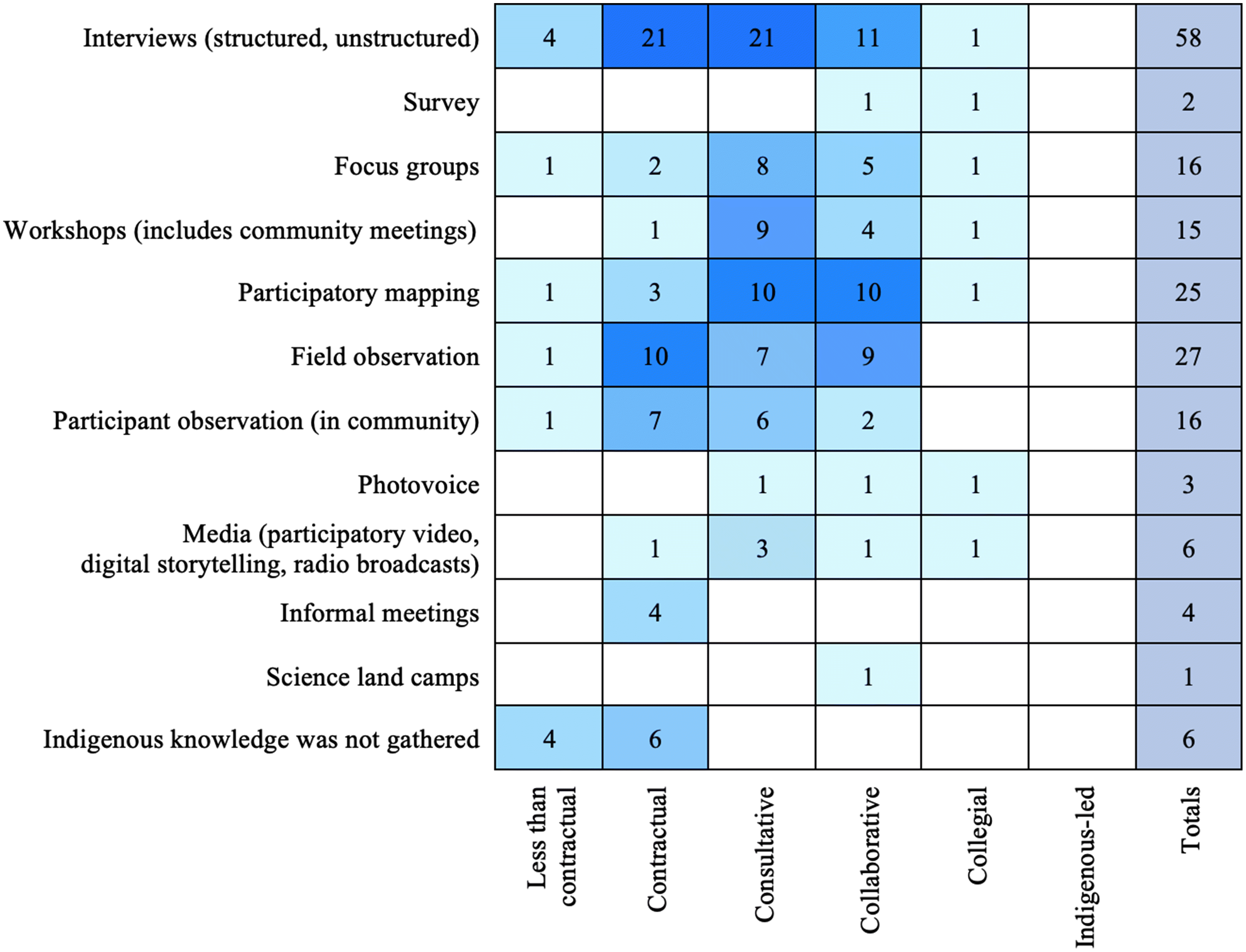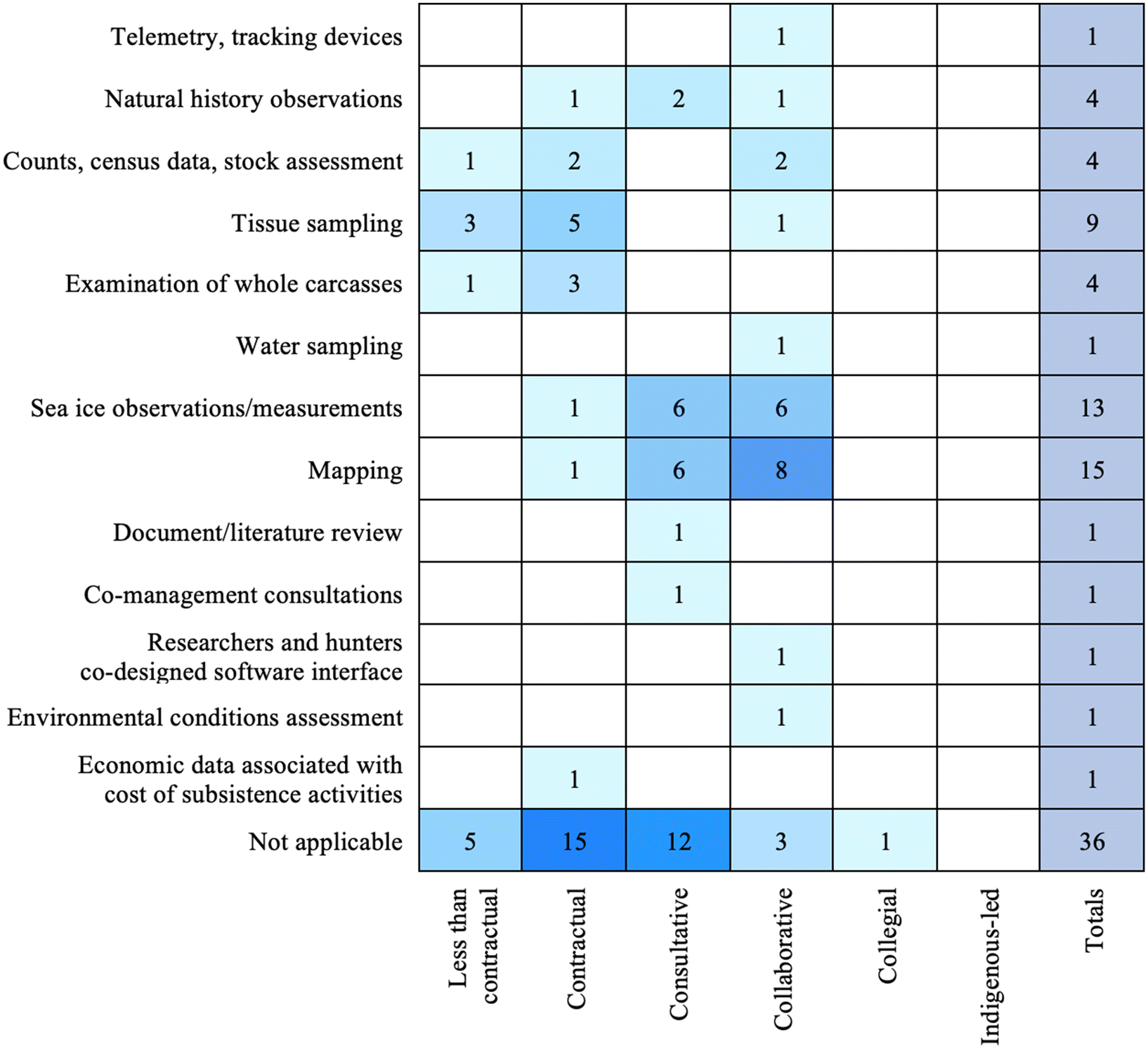Introduction
In the Canadian Arctic, reclaimed resource sovereignty and a shared interest in conserving ecosystem integrity are contributing to increasing collaborations between Inuit and Western scientists in environmental research (e.g.,
CIHR et al. 2018;
Wong et al. 2020). Additionally, there is emphasis on building partnerships that respect Inuit self-determination and ensure that research is meaningful to communities (
ITK 2018;
ICC 2021;
Government of Canada 2022). This aligns with national importance placed on the rights of Indigenous Peoples in environmental management, which is supported by the Fisheries and Oceans Canada
Reconciliation Strategy (
Fisheries and Oceans Canada 2019),
Canada’s Arctic and Northern Policy Framework (
Crown-Indigenous Relations and Northern Affairs Canada 2019), and the
United Nations Declaration on the Rights of Indigenous Peoples Act (
Department of Justice Canada 2021). There is also greater recognition of Indigenous knowledge in climate change adaptation (
Parry et al. 2007;
Ebi 2012;
Convention on Biological Diversity 2019), in environmental stewardship, and in guiding scientific decision-making (
Government of Canada 2021a,
2021b). Indeed, bridging Indigenous and Western science-based knowledges (see
Table 1 for definitions) can more effectively address complex biodiversity conservation and co-management issues by enabling a holistic understanding of rapid environmental change (
Berkes 2018;
Reid et al. 2021). These challenges have resulted in intensified coastal and marine research and monitoring efforts that incorporate both knowledge systems (
Alexander et al. 2019).
The nature and extent of community participation in Arctic research and monitoring are highly variable, as are the terms used to describe participation in research studies. While not exhaustive, these terms can include: consultative, collaborative, community-based, community-led, community-directed, or community-driven research and (or) monitoring. Terms are frequently differentially defined, not defined, or meanings are alluded to. The term community-based monitoring (CBM), for instance, is often used and encompasses a range of approaches (
Kouril et al. 2016). The Conservation of Arctic Flora and Fauna working group of the Arctic Council defines CBM as a collaborative process where communities, government, industry, and academia “monitor, track, and respond to issues of common community concern” (
Fleener et al. 2004, p. 2). Others have equated CBM to “participatory” monitoring, noting outputs such as contribution to local stewardship and capacity enhancement (
Marcoux et al. 2011). Conversely, in their atlas of community-based projects and networks across the global Arctic,
Johnson et al. (2016b) chose not to define CBM so that it remains inclusive of different levels of community involvement and note that there is no single, accepted definition. The wide range of contexts and definitions (or lack thereof) associated with this term can lead to murky ethics and confuse or prevent the sharing of experience amongst scientists conducting similar research. Although authors often acknowledge the diversity of terms used (e.g.,
Johnson et al. 2016b;
CIHR et al. 2018), to our understanding, no one has yet performed a semantic analysis to examine this diversity in research and monitoring in Canada.
It follows that with the high variability in articulating and defining community participation, similar difficulties arise in how these terms are put into practice or operationalized. A single term may be used to describe methods with very different degrees of community participation (
Kouril et al. 2016;
David-Chavez and Gavin 2018;
Mosurska and Ford 2020), potentially misrepresenting the community decision-making capacity in the research and (or) monitoring process (hereafter referred to as research process) and perceived benefits. To assess the degree and nature of community participation across the research process, several authors have created levels on a spectrum, from participation of community members as research subjects to projects in which research is led by the community (e.g.,
Danielsen et al. 2009;
David-Chavez and Gavin 2018). This assessment can enable insight into the inclusion of Indigenous knowledges, as well as the use of responsible research practices that uphold Indigenous rights (
David-Chavez and Gavin 2018). There is a need to characterize participation and improve the transparency of this participation to continue to develop good practices.
This scoping literature review explores peer-reviewed research and monitoring studies undertaken with community participation in coastal and marine environments across Inuit Nunangat (ᐃᓄᐃᑦᓄᓇᖓᑦ; includes lands, waters, and ice). Inuit Nunangat is a distinct geographic, cultural, and political region encompassing four regions in the place now called Canada: the Inuvialuit Settlement Region (Northwest Territories and Yukon Territory), Territory of Nunavut, Nunavik (Northern Québec), and Nunatsiavut (Northern Labrador). Our first objective examines the ways in which participation has been articulated in the studies through semantic analysis by investigating terms used to describe participation, their associated definitions, and their use over time. Our second objective examines how participation has been operationalized through Indigenous and Western science-based data compilation methods and an assessment of community participation in the research process for each study, using levels from
David-Chavez and Gavin (2018). We highlight inconsistencies in language use and level of participation to illustrate the importance of concisely describing community participation on a community or research project basis. We assert that it is imperative that researchers work with individual Indigenous communities to develop processes and terminologies that reflect community understanding and priorities. As calls for collaborations intensify in parallel to efforts to facilitate Indigenous self-determination in research, it is vital that researchers clearly communicate their use of terms and describe the associated participatory methods to promote transparent, robust, and reciprocal research that benefits both researchers and partner communities. While this paper is intended to inform environmental and social scientists, findings may also prove useful for researchers in other disciplines. Considerations presented here may be particularly helpful for early career researchers as they approach participatory research projects and establish relationships with communities.
This review arose from our work co-developing and conducting coastal monitoring programs and documenting local knowledge with Inuit communities across Inuit Nunangat. The need for improved reporting and enhanced transparency emerged from our difficulties as settler academic, government, early career, and student researchers in grasping the nature and extent of community participation in published research and monitoring. In this paper, we consciously sought to draw and build upon the work of Indigenous scholars working with and within Indigenous communities. In doing so, we hope to amplify Indigenous voices, and we gratefully acknowledge the contributions and knowledge shared by these scholars and by all those who participated in each study. We are committed to ongoing learning and unlearning and do not purport to speak for Indigenous Peoples.
Discussion
Our findings are a small part of an ongoing discussion related to authentic community participation rooted in respect, relevance, reciprocity, and responsibility (
Kirkness and Barnhardt 1991). We focused on exploring key insights and gaps regarding the articulation (term use and definitions) and operationalization (data compilation methods and level of participation) of community participation in coastal and marine research and monitoring studies in Inuit Nunangat over a 28-year period from 1992 to 2020.
Of the studies reviewed, 14 terms were used to reference community participation, and these were only defined in 10% of the studies. Despite this range in terms used, most of the studies included in this review were considered to have a contractual or consultative level of community participation, where community members performed tasks or were consulted, but researchers made decisions. In fact, we noted that while most studies used the term collaborative and variations (collaborat
*, 72% of studies), when operationalized many were contractual (35% of studies) or consultative (33%). Only 18% of studies were aligned with collaborative processes. Collaborative studies have appeared more frequently in recent years, as have terms associated with community leadership in research (e.g., partner* and co
-*), which may reflect movement towards research and monitoring that supports greater Inuit self-determination (
ITK 2018;
ICC 2021). The inconsistency in definitions and the operationalization of research speaks to the need for transparency to ensure that research does not lend itself to tokenism or the misrepresentation of participation. To this end, we offer insights and suggestions to guide environmental and social scientists, but emphasize that Inuit decision-making on a community basis must be central to all phases and forms of research conducted within Inuit Nunangat.
One main objective of this paper was to determine how community participation has been articulated in research and monitoring studies through semantic analysis. A few terms used to represent community participation appeared much more frequently than others, notably participation and variations (participat*) and collaboration and variations (collaborat*). Variations of these terms may be more common in the literature due to disproportionate circulation of more general terms in comparison to specific terms (e.g., partner*, community
-led). The prevalence of participation and variations (participat*) at contractual and consultative levels suggests that a large proportion of research deemed to be “participatory”, for example, often primarily involves community members as data collectors, which is similar to the findings of other researchers (
Turreira-García et al. 2018;
David-Chavez and Gavin 2018). There are increasing calls for higher levels of participatory research with northern communities, but the misalignment between terms used and how they are operationalized can exacerbate uneven power dynamics and the history of extractive research practices with Indigenous communities (
Wilson et al. 2018). The prevalence of the term community-based and first appearances of community-led and community-driven in studies with higher levels of participation (e.g., collaborative) are not surprising as they convey a higher level of community decision-making authority in the research process. Similarly, terms that allude to balanced contribution and a relationship between researchers and community participants, such as variations of partnership and co
-* terms, were found when studies had greater community participation.
Our finding that very few studies defined their usage of terms, with an absence of definitions for 71% of terms (10/14 terms), elucidates a major gap that is further confused by varied term use. The definitions of community-based differed, with emphasis on response to issues of common community concern (
Gérin-Lajoie et al. 2018;
Dawson et al. 2020) and a “robust” level of community involvement leading to knowledge co-production (
Carter et al. 2019) (
Table 5). The term co-production and variations (co-produc*) also used alternate definitions, which referred to knowledge co-production as a process (
Idrobo and Berkes 2012) and an outcome (
Galappaththi et al. 2019).
Galappaththi et al. (2019) provided the sole definition among collaborat
* variations (collaboration), which was broad in reference to action taken by a group of people to reach a common objective. Similarly, only one participat* variation was defined (participation), with
Harper et al. (2012) highlighting the involvement of rightsholders and stakeholders in every phase of the research process. While many of these definitions share similar elements, they differ with respect to the individuals involved in the process, by whom the research objective is defined (community, or community and researchers), the intensity of participation throughout the process, and whether community-centred outcomes are attained. The appearance of most of these definitions over the last few years is promising. However, with this growth, there is a heightened need for the transparent articulation of community participation in research methods to further develop good practices in community research and monitoring.
Our second objective was to describe how community participation has been operationalized. A wide variety of methods were used in Indigenous knowledge and Western science data compilation, as seen in other reviews (e.g.,
Alexander et al. 2019;
Thompson et al. 2020). The overwhelming majority of studies compiled and documented Indigenous knowledge through interviews, followed by field observations and participatory mapping, while Western science methods were dominated by mapping and ice measurements, which are likely a reflection of a broader geographic focus. The many data compilation methods available to researchers and communities as identified in this scoping review offer opportunities for learning. We found that common approaches such as interviews or participatory methods (e.g., participatory mapping, focus groups) can span all five levels of community participation from least to most community involvement. This points to a need for further research examining characteristics that differentiate studies that use these methods but have higher (e.g., collaborative) versus lower (e.g., contractual) overall levels of participation to better understand how to improve research approaches. For example, in regard to interview methods, a closer look at design and delivery or community–researcher relationships may explain differential participation. This insight would be valuable in identifying specific actions that increase meaningful community participation while using familiar, effective, and respectful methods.
The near absence of collegial and Indigenous-led studies in our review emphasizes the need for projects in which communities have significantly more decision-making authority in aquatic research and monitoring. This absence has been echoed in other recent reviews (e.g.,
Kouril et al. 2016;
David-Chavez and Gavin 2018;
Mosurska and Ford 2020). Most studies are categorized in lower tiers of community participation at the contractual and consultative levels, which can rely heavily on community knowledge. At these lower participation levels, methods used (e.g., tissue sampling) reflect the relative ease with which community members can participate in projects through their knowledge of local species and related skills (i.e., working with animals for food or cultural purposes). Methods such as these offer possibilities of community participation in research as a means of maintaining and even supporting the intergenerational transfer of Indigenous knowledge (
Tang and Gavin 2016), especially if the research has strong Indigenous leadership. Certain research methods may offer opportunities for movement towards more inclusive collaboration, such as those requiring context associated with the environment to understand trends (e.g., mapping, sea ice measurements), or requiring intensive community collaboration (e.g., workshops, focus groups). An in-depth analysis of methods and data compilation approaches could yield insight into processes that enable greater community participation. However, collegial or Indigenous-led projects can likely only be attained through increased community decision-making authority throughout the entire research process, with objectives centered on community needs and the co-production of community-owned outcomes. A closer look at participation throughout the research process and ways to amplify Indigenous voices throughout all project phases is necessary.
It is important to consider several contributing reasons for lower community participation in research and monitoring. The abundance of collaborative studies in comparison to collegial studies may point to a time lag in which leadership in the research process is transferred from researchers to Indigenous communities. This process could be enabled by established relationships between researchers and communities centered in skill enhancement, outcome ownership, and empowerment. Furthermore, in this scoping review, our use of a scientific metric (i.e., database searches) to gather studies with community participation may have resulted in our missing Indigenous-led studies that may not be published due to concerns related to intellectual property rights and data sovereignty. However, these reasons alone cannot fully explain the scarcity of studies led by Indigenous communities in the academic literature. Many recommendations by leading organizations in Canada aim to address this near absence of community leadership in research. The Inuit Tapiriit Kanatami
National Inuit Strategy on Research is focused on actions leading to mutually beneficial relationships and Inuit self-determination (
ITK 2018). Statements in the
Canadian Tri-Council Policy Statement on Ethical Conduct for Research Involving Humans and the Inuit Circumpolar Council
Ethical and Equitable Engagement Synthesis Report further express that it is a powerful motivating force for community members to assume decisive roles in research (
CIHR et al. 2018;
ICC 2021). Policy issues, administrative capacity, community skillsets, or funding processes and allocations can serve as significant obstacles to participation, as can infrastructure and difficulties obtaining equipment (
ITK and NRI 2006). Many dimensions (e.g., political, economic, social) that interact would be fruitful areas for further inquiry as they affect opportunities and capacity for stronger participation by Inuit communities. In addition, critical considerations of participant voices that remain underrepresented (e.g., youth, women) in community research are necessary (
Hitomi and Loring 2018;
Aaluk et al. 2019;
Mosurska and Ford 2020;
Sadowsky et al. 2022).
With environmental changes occurring rapidly in the Canadian Arctic, there are increasing funding opportunities for research that may result in an influx of new researchers and programs in this field. As new scientists engage with Indigenous communities, a greater understanding of terms, methods, and approaches used for community participation, and manners to further Indigenous leadership in research, are becoming more important. The growth in relevant papers may have been spurred by the founding of the research network ArcticNet in Canada in 2004 (
ArcticNet 2020) as well as the fourth and most recent International Polar Year, which occurred from 2007 to 2008 and drew attention to research with northern Indigenous communities. The increasing calls and funding for community participation in research have been intended to ensure greater decision-making authority for community members in research and monitoring.
Geographically, the majority of studies were conducted in Nunavut as similarly reported in
Alexander et al. (2019), which may result from a greater influx of funding and increased opportunities for research associated with this region being a territory of its own. The prevalence of studies conducted in four Nunavut communities points to a need for inquiry into factors that influence and enable such research and monitoring. For example, a community may have built relationships over time with specific collaborators or have previously partnered with researchers on different projects that may even span across disciplines. As our results are skewed in primarily representing the participation of Nunavummiut (inhabitants of Nunavut), there is a need for further research to be conducted elsewhere in Inuit Nunangat, and in Nunatsiavut in Labrador in particular, to address underrepresentation.
